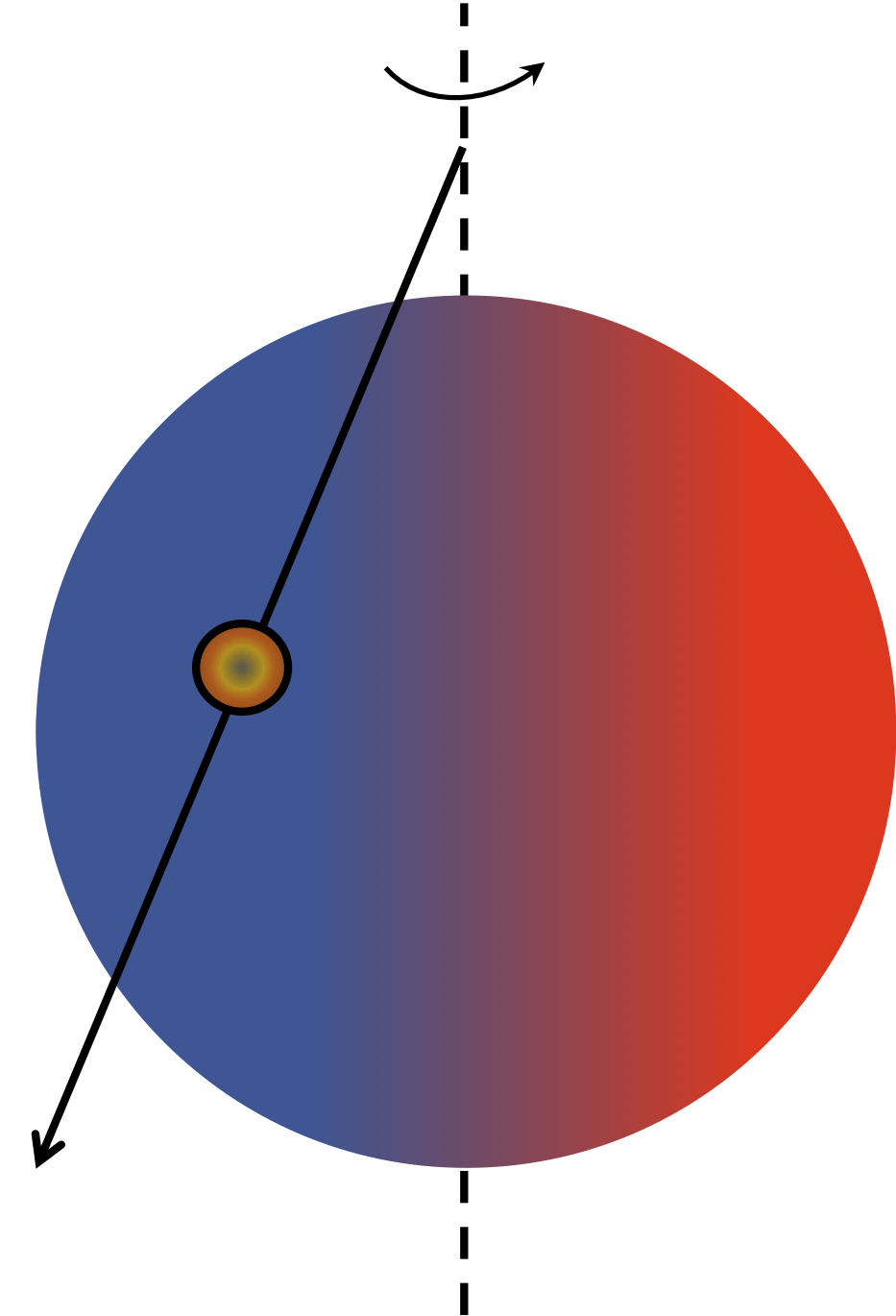Rossiter-McLaughlin effect measured in more different transiting planetary systems
The study of the physical and orbital properties of exoplanets, in connection with the physical characteristics of their host stars, provides important insight into formation and evolution mechanisms of planetary systems, which are currently a matter of extensive debated. In particular, the evolution theories of planetary orbits are very dificult to establish on solid ground, because there are so many possible architectures of planetary systems and many factors can contribute to modify the dynamic of these systems during their secular life.
The existence of a hot-Jupiter population, i.e. Jupiter-mass planets with orbital periods of only a few days, is a clear indication that inward migration occurred during the process of formation or early evolution for many of these gaseous planets. Widely accepted scenarios of the migration of giant planets involve planet-disc interaction, in which planets are kept on circular orbits with orbital axes parallel to the stellar spin axis, whereas planets on eccentric and oblique orbits can be the result of planet-planet scattering or Kozai torque by a distant massive companion. Therefore, the orbital obliquity, i.e. the angle between the orbital angular momentum and the spin of the host star, represents an extremely important parameter, as the astronomers can use it to probe how planetary systems form and evolve. As all the above-mentioned migration scenarios probably occur, it is mandatory to study a statistically significant sample of exoplanetary systems to quantify the relative importance of the orbital obliquity.
Within the framework of the long-term observational programme Global Architecture of Planetary Systems (GAPS), which used the high-resolution spectrograph HARPS-N at the 3.5m Telescopio Nazionale Galileo (TNG), the group lead by Elvira Covino and Massimiliano Esposito (INAF - OAC) conducted a subprogramme for studying the spin-orbit alignment of a large sample of known exoplanetary systems. The HARPS-N high-precision radial velocity measurements, gathered during planetary-transit events, make possible to precisely measure the Rossiter-McLaughlin effect in the target systems and determine the sky-projected angle between the planetary orbital plane and stellar equator. This subprogramme is also supported by photometric follow-up observations with an array of medium-class telescopes, including the Cassini 1.52m Telescope at the Astronomical Observatory of Bologna in Loiano.
"It is a difficult task to trace all the steps that occurred during the migration phase of hot Jupiters" says Luigi Mancini, lead author of the paper and researcher at the University of Rome 2, "and the orbital obliquity could play an important role in disentangling the bundle of possible physical processes. For this purpose a statistical study of a large sample is required and, with our last work, we have given another contribution to the enlargement of the sample. In particular, we focused on the characterisation of five transiting planetary systems (HAT-P-3, HAT-P-12, HAT-P-22, WASP-39, and WASP-60) and the determination of their sky-projected planet orbital obliquity through the measurement of the Rossiter-McLaughlin effect. We found that the spins of two of these systems (HAT-P-22 and WASP-39) are well aligned with the planetary orbital axis. Instead, the orbit of the exoplanet HAT-P-3b is slightly misaligned, while that of HAT-P-12b seems strongly misaligned, even thought we were not able to put robust constraints on our measurements. Finally, WASP-60b is moving on a retrograde orbit, that is the planetary orbital spin and the stellar rotational spin point towards opposite directions. This is a quite unexpected configuration, but it seems to be not very rare as this kind of orbit was already observed in other few exoplanetary systems".
"We can now count more than 3500 exoplanets in our Galaxy" concludes Mancini, "and marvel how physically varied and intriguing most of them are, and how diverse their architectures can be, confirming science-fiction pictures in several cases or going beyond human imagination in others."
More information at https://arxiv.org/abs/1802.03859.

The scheme is showing the planet WASP-60b transiting in front of his star. The dotted line is the rotation axis of the star. The arrow line is the path followed by the planet.

Phase-folded RV data of HAT-P-3, HAT-P-12, HAT-P-22 and WASP-39 taken with HARPS-N during planetary-transit events. Superimposed are the best-fitting RV-curve models. The corresponding residuals are plotted in the lower panels.

Phase-folded RV data of WASP-60 taken with HARPS-N during a planetary-transit event. Superimposed is the best-fitting RV-curve model. The corresponding residuals are plotted in the lower panel

